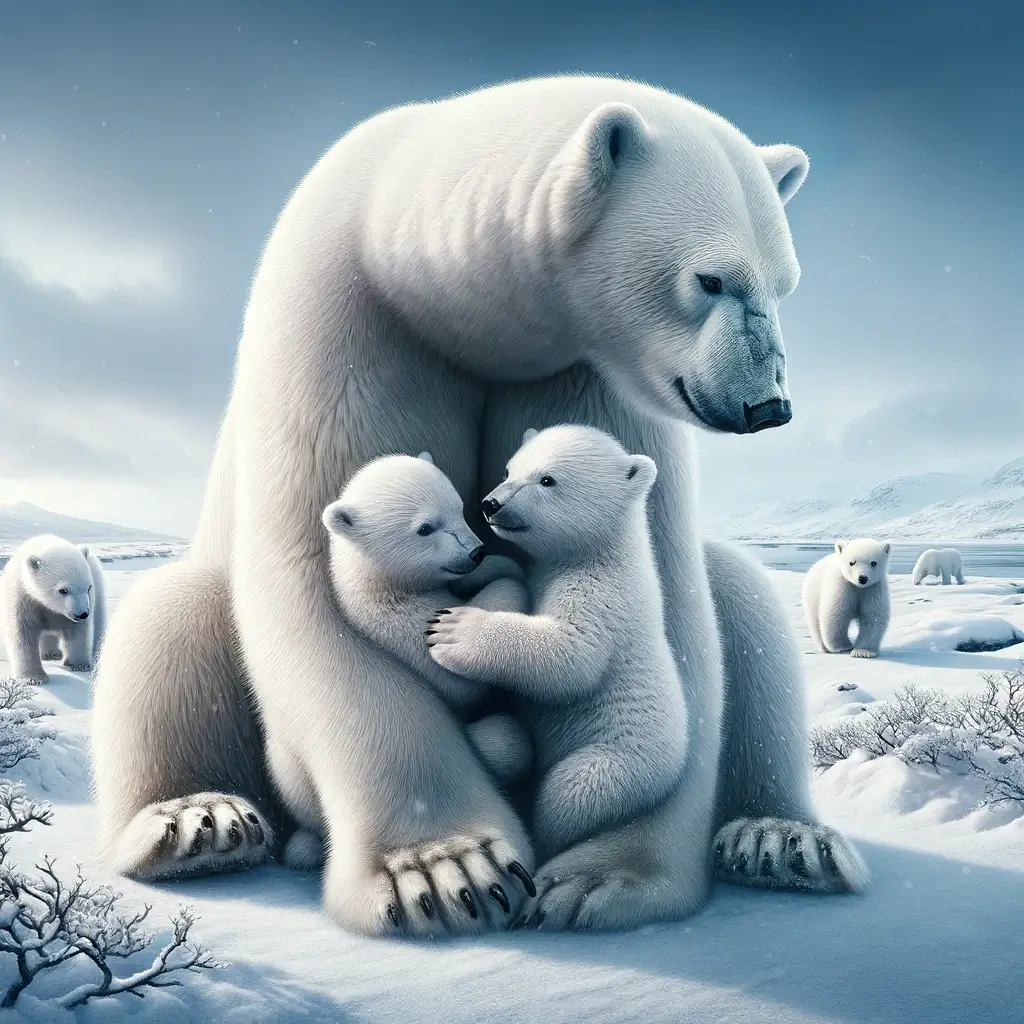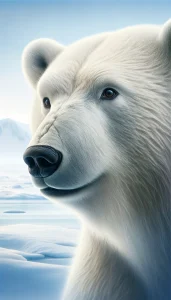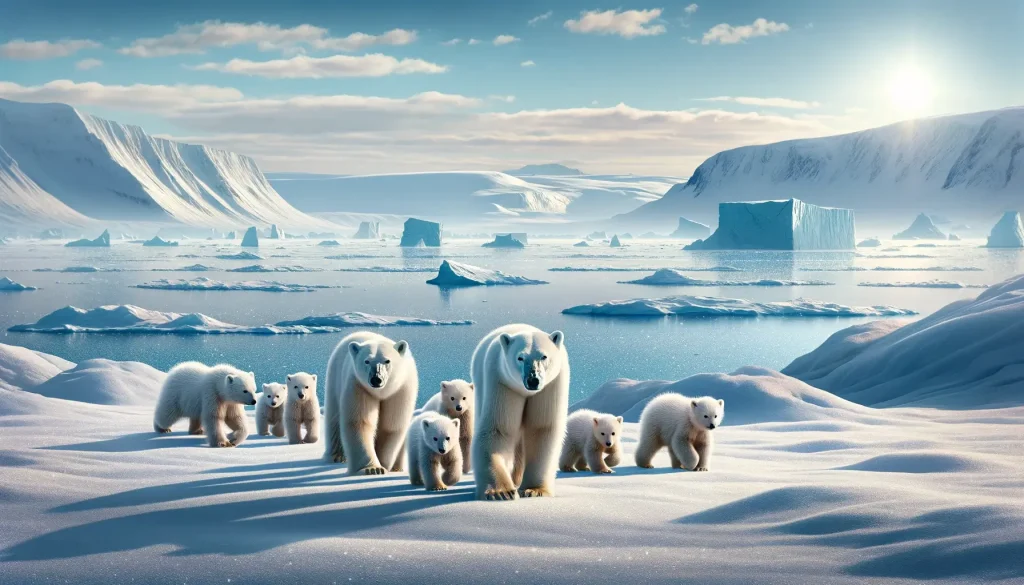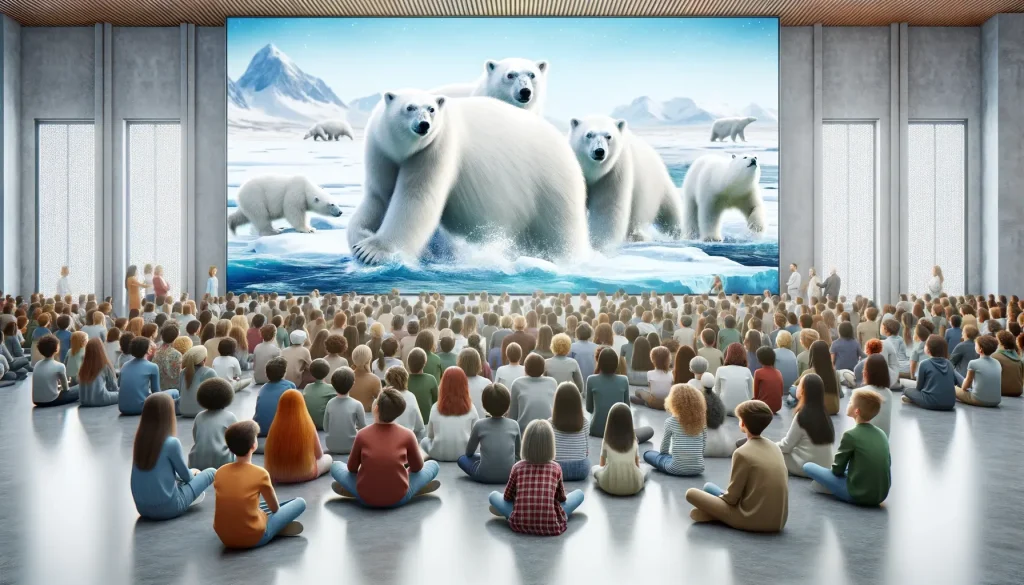
How Can You Celebrate International Polar Bear Day 2024?
Each year on February 27, we celebrate International Polar Bear Day, a day dedicated to raising awareness about the preservation of these magnificent creatures and their habitat. As the planet warms and the Arctic ice continues to melt, polar bears face increasing challenges to survive. This day isn’t just about appreciating the beauty of polar bears from afar; it’s an urgent call to action to protect them and the sea ice they depend on. There are several ways you can participate in this cause, from donating to adopting a polar bear symbolically and engaging with educational content about their conservation.
A Look Back at the First International Polar Bear Day
The story of International Polar Bear Day begins as a tale of growing concern and global awareness. Started by Polar Bears International, this day quickly became a critical platform for spreading knowledge about the unique challenges faced by polar bears in a warming world. It’s not just a day; it’s a movement that spotlights the urgent need for action to save these majestic creatures and their vanishing habitat.
Polar bears, the largest land carnivores, have become the symbol of the Arctic’s fragile ecosystem. Their survival is tightly linked to the presence of sea ice, which they rely on for hunting seals, their primary food source. As the Earth’s climate changes, the ice melts earlier and forms later each year, drastically reducing the polar bear’s hunting season. This has placed polar bears on the vulnerable species list, stirring global concern.
The inception of International Polar Bear Day was a response to this concern. It’s an event that encourages people worldwide to engage in conversations about the Arctic’s future. The goal is not just to generate sympathy for polar bears but to drive actionable change. Through various activities like donating, participating in awareness events, and adopting a polar bear symbolically, the day aims to foster a deeper understanding of the impact of climate change on polar bears and the Arctic ecosystem.
Interestingly, this day also serves as a reminder that individual actions, when multiplied, can lead to significant positive impacts on the environment. From switching off unnecessary lights to reducing carbon footprints, the day encourages small steps that can collectively aid in the conservation efforts for polar bears.
Educational content plays a pivotal role in International Polar Bear Day, with live events and online resources providing valuable insights into polar bear conservation. These pieces of information not only answer common FAQ types of queries but also spark conversations that can lead to more significant awareness and action.
Moreover, the day has seen growing participation over the years. Communities, schools, and organizations join hands to contribute to the cause. Whether it’s through art, science projects, or community clean-ups, the activities around International Polar Bear Day highlight the community’s role in conservation efforts.
International Polar Bear Day has evolved from merely a day of appreciation to a potent catalyst for change. It underscores the interconnectedness of human actions and the well-being of the planet’s ecosystems. By celebrating this day, we’re reminded of our power and responsibility to contribute to the preservation of the Arctic and its inhabitants for future generations.
The Journey of Polar Bears Through History
Polar bears have a story that stretches back thousands of years, playing a vital role in Arctic ecosystems. These majestic creatures have adapted to life in a freezing habitat, relying on sea ice for hunting and breeding. Their history intertwines with the Earth’s climate cycles, showing their resilience and adaptability.
Polar bears evolved from brown bears around 150,000 to 200,000 years ago. Their bodies have changed over time to survive the cold, with thick fur, a layer of fat, and black skin to absorb heat from the sun. These adaptations make them perfect hunters in icy environments.
Throughout history, polar bears have been crucial to the cultures of Indigenous peoples in the Arctic. They are respected and often seen as symbols of strength, endurance, and spiritual significance. Hunting practices and traditional knowledge from these communities have contributed to understanding polar bear behaviors and conservation needs.
The conservation story of polar bears is complex. In the 1970s, unregulated hunting raised concerns about declining polar bear populations. International efforts led to agreements that protect these animals across their range, focusing on sustainable management. Today, the challenge has shifted to climate change. The melting Arctic ice reduces the habitat polar bears need to hunt and survive, posing a new threat.
Science plays a key role in polar bear conservation. Researchers track polar bear populations, study their health, and monitor ice conditions. This information helps guide actions to preserve their habitat. Technological advances, like satellite tracking and drones, offer insights into their remote world.
The journey of polar bears is a testament to their resilience. Yet, it highlights the urgent need for action to address climate change. By supporting efforts to reduce carbon emissions and protect Arctic habitats, we can help ensure polar bears continue to roam the Arctic for generations to come.
Engaging with International Polar Bear Day is a way to contribute to their story of survival. By donating, adopting a polar bear, or participating in awareness events, we can all be part of the effort to conserve these iconic animals and their icy home.

Polar Bears in Our Cultures
Polar bears hold a special place in our hearts and cultures. These incredible animals have not only adapted to some of the harshest conditions on Earth but have also ingrained themselves into the cultural identity of many Arctic communities. Their image carries a strong message about climate change, making them a powerful symbol in the conservation movement.
In many Northern cultures, polar bears are revered and respected. They are considered wise, powerful, and almost human-like in their ability to survive the cold. Stories and legends depict polar bears as noble creatures, embodying the spirit of the Arctic wilderness. This respect underscores the traditional knowledge and practices that have allowed humans and polar bears to coexist for thousands of years.
On International Polar Bear Day, this cultural significance is highlighted through various activities. By adopting a polar bear, you’re not just supporting conservation efforts; you’re honoring a creature that has been a central figure in Arctic cultures for generations. This day provides an excellent opportunity to learn about polar bears, their role in ecosystems, and their significance to Indigenous peoples. It also raises critical awareness about the challenges polar bears face due to climate change.
Participation in the day’s events, from donating to joining awareness campaigns, reflects a broader understanding of our connection to these majestic animals and the environment. Engaging with educational content helps answer FAQ types of queries about polar bears, shedding light on their behavior, biology, and the urgent need for conservation efforts to ensure their survival.
The celebration of International Polar Bear Day is a testament to the global concern for polar bears and the broader environmental issues affecting our planet. It beckons us to take action, showing that individual contributions, like turning off unnecessary lights or becoming a monthly donor, can collectively make a difference in the fight against climate change and the conservation of polar bears.
Through this day, we not only acknowledge the beauty and majesty of polar bears but also recognize their importance in the world’s cultural heritage and the critical role they play in the Arctic’s ecosystem. Let’s honor these magnificent creatures by contributing to their conservation and ensuring they remain a symbol of the Arctic’s beauty and resilience for future generations.


Polar Bears in Pop Culture
Polar bears have made a significant mark in pop culture, influencing movies, TV shows, and advertising. Their iconic status goes beyond their natural habitat, bringing crucial environmental messages to the forefront of public consciousness. Here’s how these majestic creatures navigate through the realms of pop culture.
Movies and TV Shows
Polar bears have been the stars of the screen, featured in documentaries and films that highlight their beauty and the threats they face. Notable examples include “Arctic Tale” and the “Polar Bear” documentary on Disney+. These portrayals help raise awareness about climate change and its impact on polar bear habitats, threading important conservation messages through compelling narratives.
Advertising Icons
Brands have long utilized the image of polar bears to evoke feelings of purity, strength, and family. One of the most famous examples is the Coca-Cola polar bears, which have become synonymous with the brand’s holiday advertising. These ads, while meant to sell products, also bring polar bears into homes around the world, subtly reminding viewers of their presence and vulnerability.
FAQs in Pop Culture
- What movies feature polar bears? “Arctic Tale” and Disney+’s “Polar Bear” are key films highlighting polar bear life.
- Why do advertisers use polar bears? Brands use polar bear images to evoke strength, family, and cleanliness, capitalizing on their appeal.
- How do polar bears influence environmental messages? Through their pop culture presence, polar bears serve as mascots for climate change awareness, linking entertainment with important conservation efforts.
Engaging with polar bear-themed content in pop culture is more than entertainment; it’s a window into understanding these creatures and the environmental challenges they face. By supporting movies, shows, and campaigns that respect and accurately represent polar bears, audiences can contribute to broader conservation efforts. This demonstrates the power of storytelling and marketing to influence public perceptions and actions towards polar bear conservation.
Polar bears in pop culture serve not only as symbols of the Arctic’s majestic wildlife but also as ambassadors for climate change awareness. Their appearances in various media remind us of the fragile beauty of the Arctic and the urgent need to protect it. As we enjoy these cultural portrayals, let’s remember the real-life polar bears and the collective actions we can take to ensure their survival.
Whether through donating, adopting a polar bear, or simply tuning into educational content, each action adds to the global effort to conserve polar bears and their habitat. So next time you see a polar bear on the screen, remember the significance behind their pop culture stature and consider how you can help make a difference.
Why Polar Bears Matter Globally
Polar bears are not just iconic symbols of the Arctic’s wild beauty; they play a crucial role in the global environment. These majestic creatures are at the top of the food chain and are vital for the ecological balance in their habitat. Understanding why polar bears matter globally drives home the importance of conserving their dwindling sea ice habitat.
The existence of polar bears is a clear indicator of the health of the Arctic ecosystem. As the climate warms and ice melts, the challenges polar bears face in finding food increase, which has broader implications for the Arctic environment. The reduction in sea ice affects not only polar bears but also the entire ecosystem, including other wildlife and indigenous communities relying on it for survival.
International Polar Bear Day, celebrated on February 27, invites people worldwide to contribute to polar bear conservation efforts. By donating, adopting a polar bear symbolically, or engaging in awareness events, individuals can take part in global actions that have a local impact. Through these activities, people become more knowledgeable about the threats to polar bears and the ways in which they can help.
Furthermore, polar bears are influential in raising awareness about climate change. Their struggle for survival in a warming world showcases the urgent need for action to combat environmental threats. Supporting initiatives dedicated to preserving polar bears’ habitat not only helps these animals but also addresses broader climate change challenges.
Participation in events like the “Survive to 5 Challenge” or tuning into live events deepens our understanding of the intricate connection between polar bears, the Arctic ecosystem, and our global climate. These educational engagements answer FAQ types of queries about polar bears, providing actionable insights for individuals around the world.
To further emphasize the global importance of polar bear conservation, consider these actions:
- Donating to organizations focused on polar bear conservation to support their research and educational efforts.
- Joining awareness events to stay informed about the latest initiatives and ways to get involved.
- Adopting a polar bear symbolically to contribute financially to conservation projects while forming a personal connection to the cause.
- Becoming a monthly donor to ensure ongoing support for crucial conservation activities throughout the year.
By understanding the global relevance of polar bears and participating in conservation efforts, we can contribute to preserving these magnificent creatures and the Arctic’s fragile ecosystem. Let’s recognize the interconnectedness of our actions and their impact on the environment, inspiring positive change for polar bears and the planet.

How to Make a Difference on International Polar Bear Day
International Polar Bear Day on February 27 is more than a date on the calendar; it’s an opportunity for each of us to contribute to the conservation of polar bears and their habitat. Below are ways you can actively participate and make a real difference.
Educate
Learning more about the majestic Artic Polar Bears and their history and importance.
Symbolically Adopt a Polar Bear
Adopting a polar bear symbolically is a meaningful way to support conservation efforts. Your contribution goes towards research, education, and action programs that aim to preserve polar bears and the sea ice they call home.
Donate
Direct donations provide essential funds needed to carry out polar bear conservation work. By donating, you’re helping to finance the science and advocacy efforts necessary to protect these majestic creatures and their environment.
Participate in Awareness Events
Joining awareness events is a great way to stay informed and involved. These events are designed to educate participants on the importance of polar bear conservation and the actions we can take to ensure their survival.
Engage with Educational Content
Attending live events, whether virtual or in-person, provides deeper insights into the lives of polar bears and the challenges they face. It’s also a chance to learn about the significant progress made in conservation efforts.
Join the “Survive to 5 Challenge”
This challenge raises awareness of the critical importance of the first five years of a polar bear’s life. Participating in or spreading the word about this challenge can have a profound impact on conservation efforts.
Become a Monthly Donor
Setting up a recurring donation helps ensure steady support for polar bear conservation throughout the year. Monthly contributions are vital for ongoing research and advocacy projects.
Subscribe to E-News
Staying up to date with the latest news and updates on polar bear conservation is easier when you join the mailing list. You’ll receive information on how you can help, along with stories of progress and hope.
International Polar Bear Day reminds us of our connection to these incredible animals and the environment. By taking part in these actions, we can all contribute to the conservation efforts that help protect polar bears and the Arctic.
